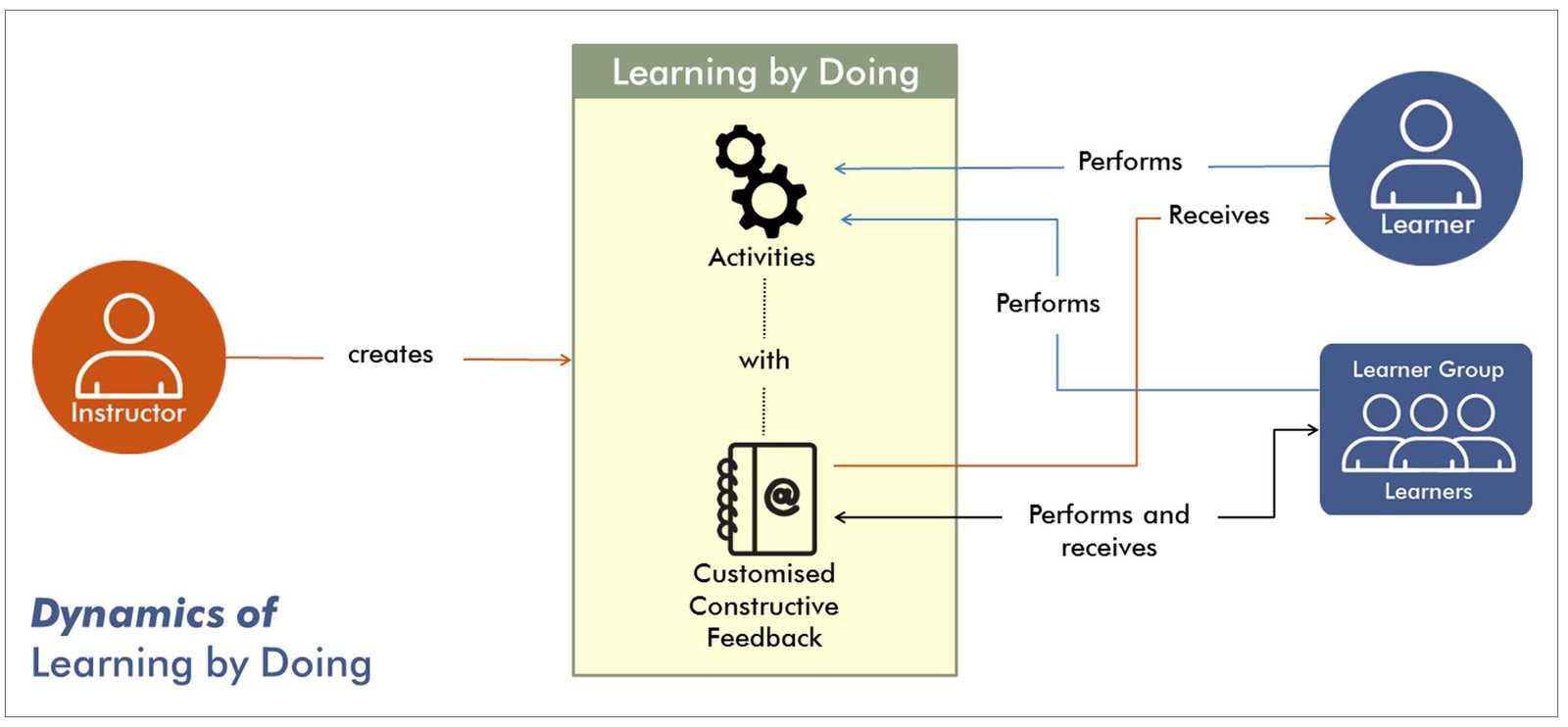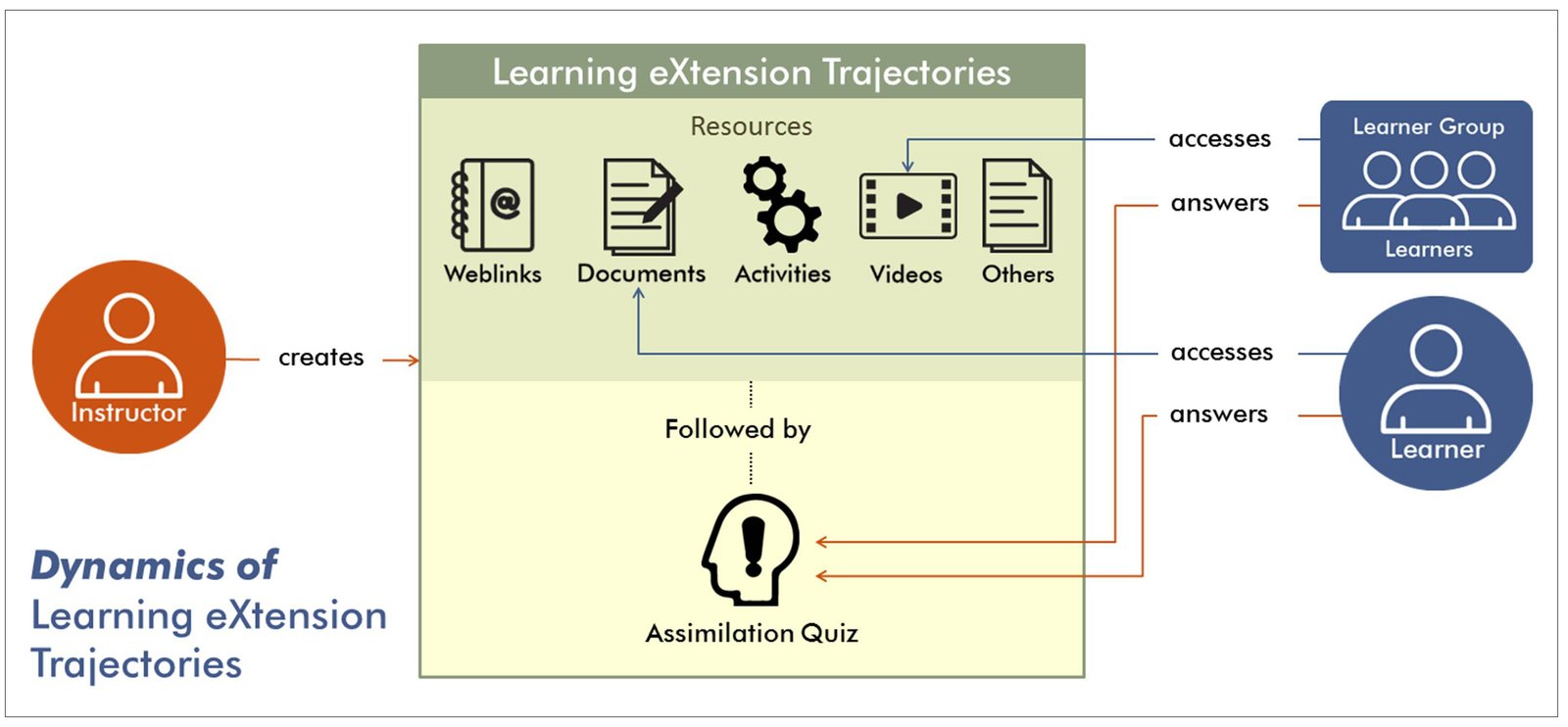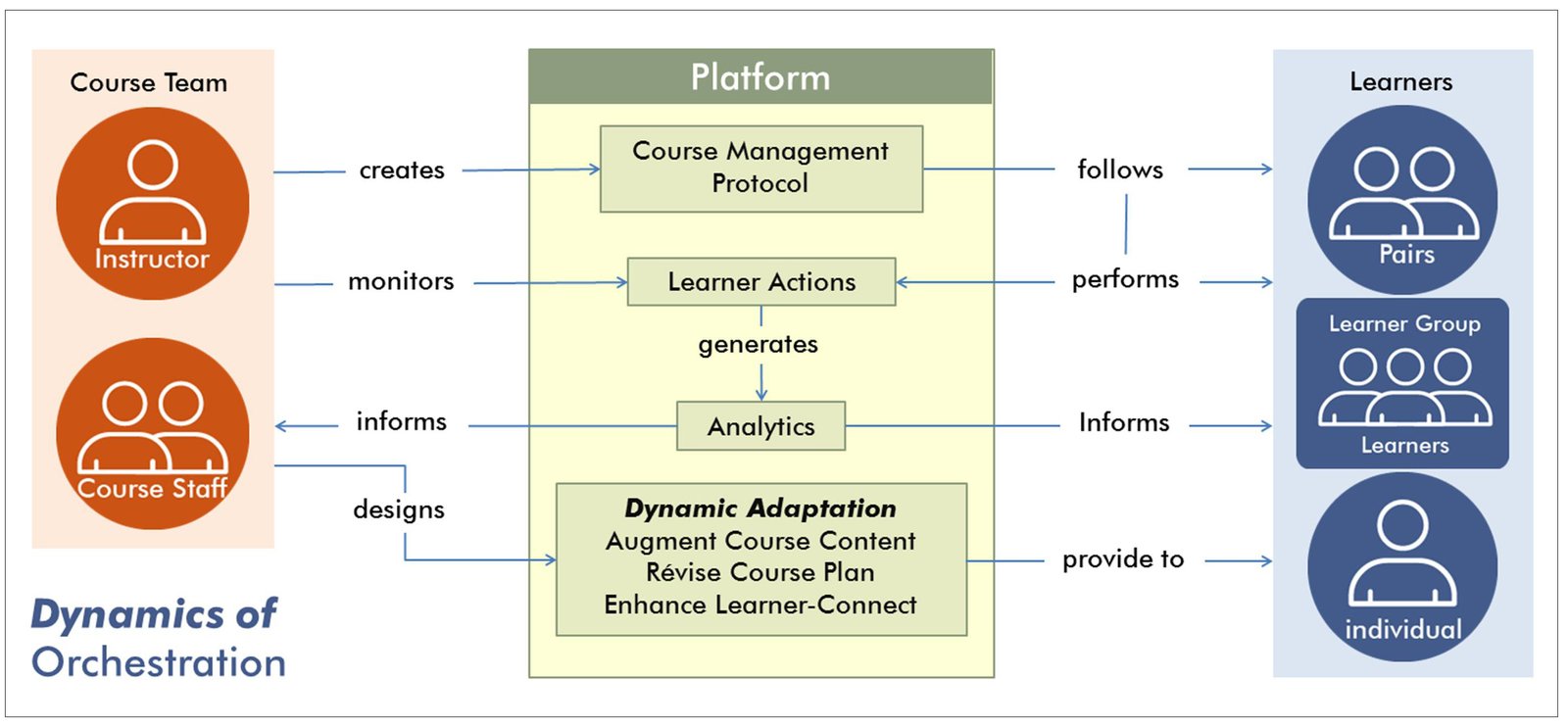
Learning Dialog (LeD) promotes concept acquisition through learner interaction. Each LeD consists of a short video providing conceptual knowledge, with explicit Reflection Spots for the learner to express prior conceptions or perform micro-practice. At a Reflection Spot, the instructor poses a question or gives a brief activity and the video pauses. The learner is expected to respond to the question or activity. The instructor wraps up the Reflection Spot by summarizing and addressing common responses.

Learning by Doing (LbD) activities are formative assessment activities that provide learners with frequent opportunities to practice and apply their learning. LbD activities help learners towards the goals of concept attainment, immediate application, or integration of knowledge. LbD activities can be designed in various formats depending on the affordances of the MOOC platform, for example, multiple choice questions, short answer text, drag & drop, or activities requiring longer responses via file upload. Each LbD provides learners with constructive and customized feedback that can be provided automatically using the technology in the platform or in a peer-review process using rubrics.


Learning Extension Trajectories (LxTs) are a mechanism to address the diversity of MOOC learners and their learning needs. LxTs consist of multiple types of resources followed by an Assimilation Quiz that incentivizes learners to access these resources. Resources can include additional readings, videos, links and so on, with specific annotated goals such as ensuring pre-requisites, advancing the depth or breadth of learners’ existing knowledge, or supporting learners’ language needs. The Assimilation Quiz is a short graded activity to ensure that learners assimilate the key concept from the resources for the
intended goal.


Learner Experience Interaction (LxI) cultivates peer learning through focused discussion. An LxI consists of a focus question that guides learners’ discussion on a given topic, and hence avoids the common problem of scattered discussion threads in MOOCs. The goal of the focus question is to elicit diverse learner views or experiences or to share learner created artefacts. It requires the learners to interact with their peers by viewing and responding to others’ posts, thus encouraging participation and leveraging peer learning. The focus question and subsequent discussion is followed by a short graded activity, the Reflection Quiz, in which learners answer specific questions related to their experience in the discussion forum.


Orchestration: To maintain a learner-centric approach in a MOOC, attention is needed not only during the design of the course content and activities, but also during the implementation of the course. Orchestration is the process in which the course instruction team assists and guides learners in their learning paths during the MOOC offering. This is especially important in an online setting as different learners will need different kinds of flexibility while accessing the course. Orchestration requires the course team to set up course management protocols, utilize course analytics to gauge learner engagement and learning, and dynamically adapt the course to maintain high levels of learner connect.

